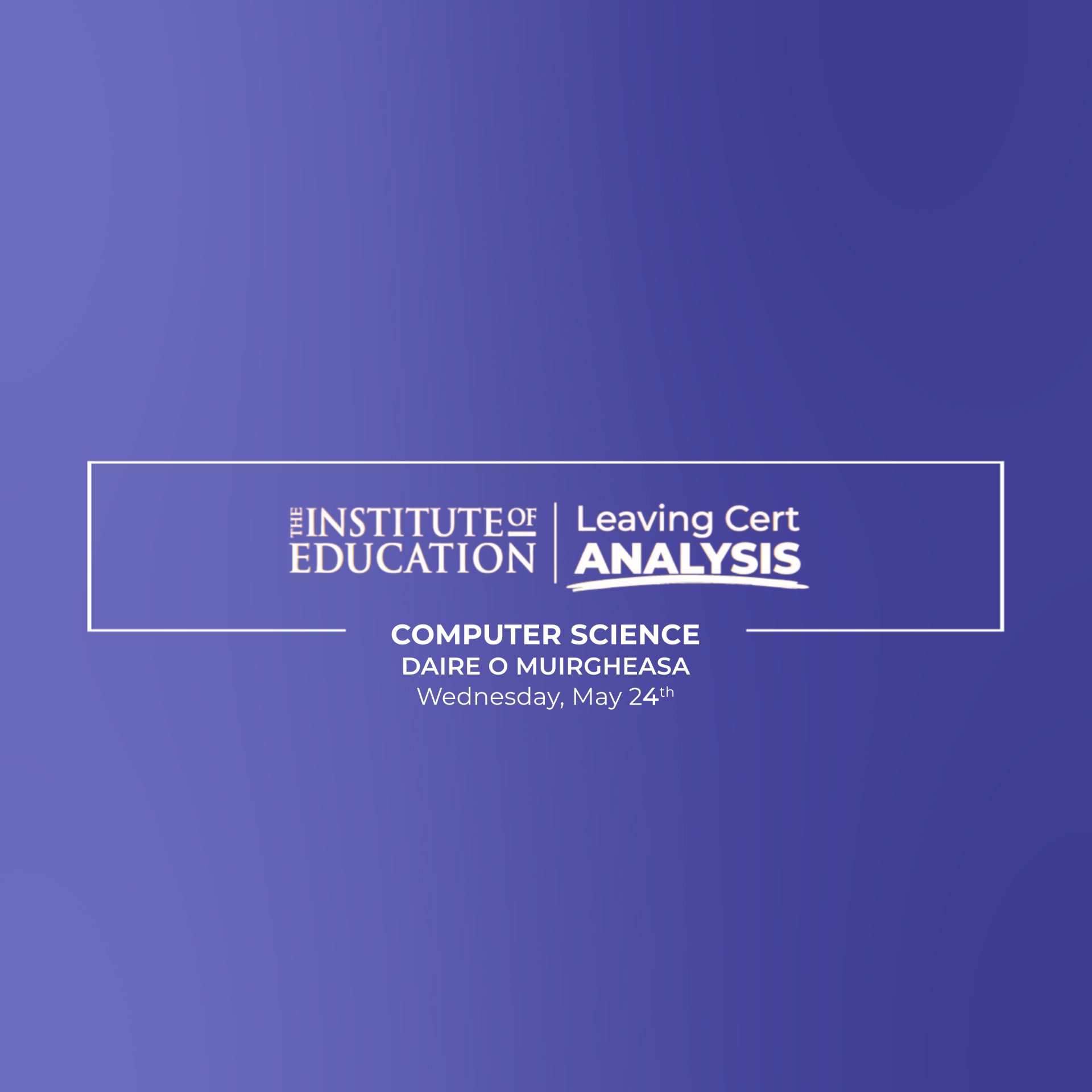Reaction to Leaving Cert 2023 Computer Science (Higher Level) by Daire Ó Muirgheasa, Computer Science teacher at The Institute of Education.
The Leaving Certificate exams kicked off this year with Computer Science. The paper which has only been broadly available outside of trial schools since 2020 takes place before the traditional June exam period.
This year’s paper returned to some of the original elements of the exam prior to Covid adjustments, most notably in the marks awarded to questions. Daire Ó Muirgheasa, Computer Science teacher with the Institute of Education, states that this combined with the adjustments that naturally come with a new subject result in it being “hard to get a read on what is be expected from the students”. That being said, Ó Muirgheasa notes that overall it was “a reasonable paper with a few oddly worded challenges”.
The exam opens with a section of short questions, many of which neatly conform to curricular expectations. “There was a Number Systems question and they should 100% expect a Number Systems question” Ó Muirgheasa notes. Some questions might have been initially challenging but rely on well established material. Of Question 5 in particular Ó Muirgheasa observes that “the question was formulated strangely but the question itself was on Boolean Logic – which was quite straight forward and expected”. Questions 8 and 9 which focus on problem-solving continued this trend, which Question 8 in particular being noteworthy; “a very strange question – the actual question is not that hard, but I imagine some students on first reading will think ‘what’s this?’, but the actual question was rather straight forward”.
While many questions conformed to expectation others posed more pointed challenges. Students were asked to draw upon more niche elements of the course which were given more emphasis or placed centre stage in larger questions. “One or two bits that didn’t seem as important in the course but there has been a question on them” notes Ó Muirgheasa. Question 5 asked on layers in protocol while Question 10 a specific approach to Quick Sort. This question in particular may have challenged some students as it depends on the teacher’s approach. Ó Muirgheasa describes it as “a little bit awkward but most students should be able to deal with it OK depending on how you learned Quick Sort”.
Section B’s long questions opened with a straightforward question on accessibility. However, Q14 would pose a challenge for students as it again emphasised particularly niche elements of the course, most of which may only be mentioned in passing or not at all. The specific application of “Accumulator” and “Virtual Memory” will mean that students will likely have to make educated guesses in how best to answer. “Every year there has been a question that makes you think ‘hmmm, that’s not one I’d like to do’, but this was part of a larger question so many students might still choose to take it” says Ó Muirgheasa, following that “I suspect they will mark it easily”. Question 15 returned to more established ground with Algorithms. “[There was] a lot about binary and linear search but if you have done your study well on it is a particularly reasonable question” remarked Ó Muirgheasa.
For some this paper will be noteworthy more for what did not appear rather than what did. Expected but absent topics include Turing Machines, Logic Gates, Databases, and an engagement with contemporary issues. Previous papers have dealt with news items, like Ransomware in response to the HSE attack, and many students will have prepared for in-depth discussions on AI and ChatGPT which so dominate headlines. However, such a question never emerged, replaced with only a vaguely AI related question.
Section C is the practical part of the exam with students given a series of programming tasks to perform. Like with previous questions, the phrasing of the question presented a more daunting challenge than the material. Ó Muirgheasa notes that “they’re given a large amount of code at the start of the exam – their given a function and a while loop and little bit more to process from the very start. But once they got settled, everything should have been fine.” Part B was a new addition for this year: an open-ended question in which the students are only given the instructions and no actual code. “Because of the newness of the question, what they were asked was somewhat similar to Part A” say Ó Muirgheasa adding that “they have had a fair bit of practice with the project this year, but I imagine for some being given a blank page was a little bit worrying”.
With such a new course and varied exam some students will be wondering what they will see on results day but Ó Muirgheasa reflects that “if you did your best, you will probably come out with more marks than you thought you did”.

